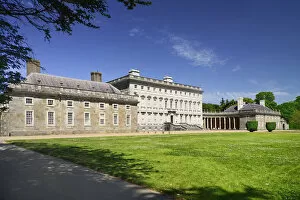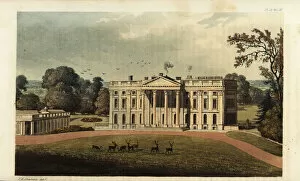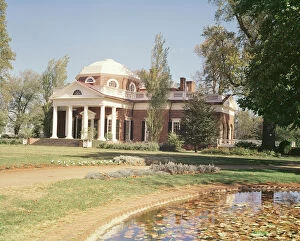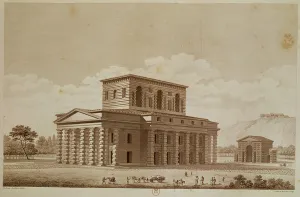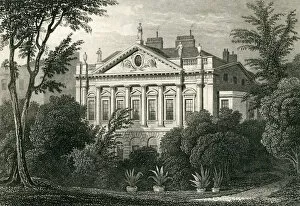Palladian Style Collection
The Palladian style, originating in 16th-century Italy and popularized by Andrea Palladio, has left an indelible mark on architectural history
All Professionally Made to Order for Quick Shipping
The Palladian style, originating in 16th-century Italy and popularized by Andrea Palladio, has left an indelible mark on architectural history. Its influence can be seen in grand structures around the world, including the Mansion House in London, England. Built in the 19th century, this magnificent example of Palladian architecture showcases its characteristic symmetrical design and elegant proportions. Another stunning representation of the they are be found at Waverton House in the picturesque Cotswolds region. The black and white photo captures its timeless beauty, with its classical elements such as pediments and columns seamlessly integrated into the countryside landscape. Traveling to County Kildare in Ireland unveils yet another gem - Celbridge. This charming town boasts buildings that proudly display their Palladian influences, showcasing a harmonious blend of simplicity and sophistication. Back to London again, we encounter Mount Edgcumbe - Cornwall's pride and joy. This seat of Richard Edgcumbe stands tall with an engraving capturing its grandeur from 1825. The Palladian features are evident here too; it is a testament to how this architectural style transcends time. Moving on to Whitehall brings us face-to-face with The Banqueting House - a true masterpiece of Palladian architecture dating back to 1816. Its imposing facade commands attention while exuding elegance through its perfectly proportioned windows and decorative details. Crossing over to America takes us straight into Thomas Jefferson's world at Monticello. The first version (elevation) predating March 1771 showcases Jefferson's deep appreciation for the Palladian style as he meticulously designed his own home using these principles. Venturing further east brings us to Tara Kothi Observatory – a captivating structure captured beautifully in black-and-white photography. Standing proud amidst nature's splendor, it exemplifies how even smaller-scale buildings can embrace the gracefulness inherent within the Palladian style.


